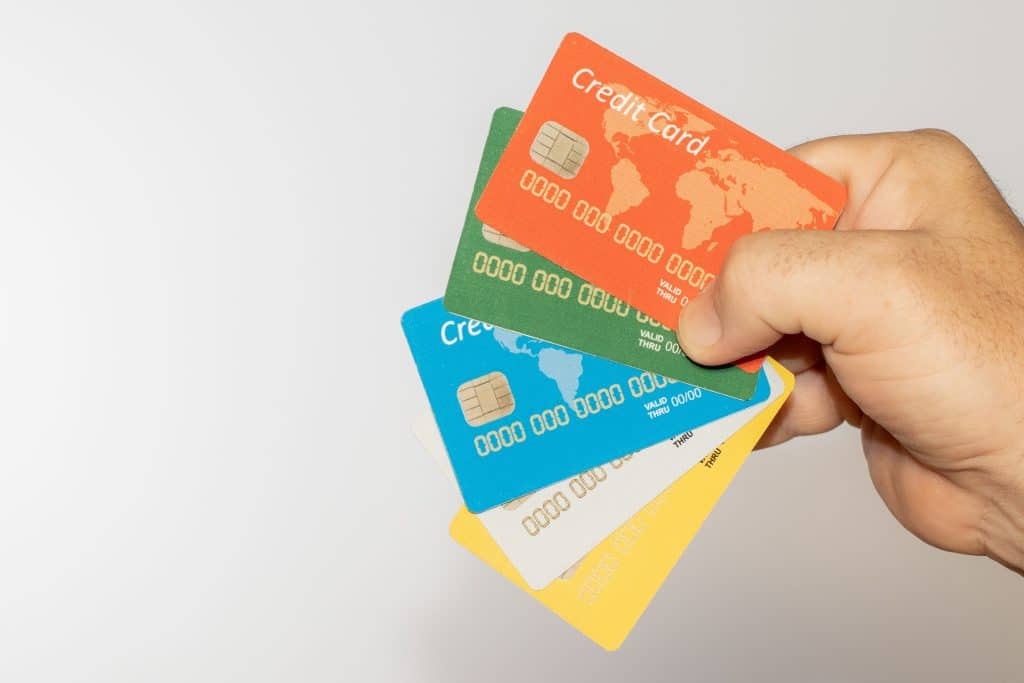Take advantage of balance transfer cards in 2025

Anúncios
If you’re struggling with high-interest credit card debt, balance transfer cards might be the solution you’ve been looking for.
By transferring your debt to a card offering a low or even 0% introductory APR, you can reduce your financial stress and save money. These cards are a valuable tool for managing your debt and regaining control of your finances.
Have you ever wondered how you could pay off your debt faster without the heavy burden of high interest rates? Balance transfer cards offer a way to do exactly that, helping you save money and simplify your payments in the long run.
What are balance transfer cards?
Balance transfer cards are specifically designed to help individuals manage and pay off high-interest credit card debt more effectively.
These financial tools allow you to move existing debt from a higher interest credit card to a new one, often offering a 0% introductory APR for a specific period.
This can provide significant relief, especially for those struggling with accumulating interest on their existing debt.
How Balance Transfer Cards Help You Save Money
By transferring your existing credit card balance to a balance transfer card, you can stop the accumulation of high interest, allowing more of your monthly payment to go toward reducing the principal balance.
Many balance transfer cards offer an introductory period that lasts between 6 to 18 months, during which time no interest is charged. This is an excellent opportunity to pay off your debt without additional interest burden.
However, it’s crucial to understand the costs associated with balance transfer cards. Most cards charge a balance transfer fee, typically ranging from 3% to 5% of the amount being transferred.
While this fee may seem small, it’s important to factor it into your overall cost to determine if the balance transfer is worth it.
Additionally, once the promotional period ends, the balance transfer card will revert to a standard interest rate, which can vary by card and affect your remaining balance.
Therefore, to make the most out of your balance transfer, it’s essential to pay off the transferred balance before the introductory rate expires to avoid incurring high interest on any remaining debt.
Key Points to Consider When Using Balance Transfer Cards
- Introductory APR Period: Look for cards offering the longest 0% APR period. This allows you to make more progress on paying down the principal.
- Balance Transfer Fee: Be mindful of the fee, which usually ranges between 3% and 5% of the amount transferred. Ensure that this doesn’t offset the savings from the lower interest rate.
- Post-Introductory Interest Rates: After the introductory period, interest rates typically increase to a standard rate. Make sure to check the rate and avoid any surprises.
- Credit Limit: Ensure the credit limit on the balance transfer card is sufficient to cover the balance you want to transfer. If the limit is too low, you might end up with leftover debt.
Choosing the right balance transfer card can make a significant difference in managing your debt.
By comparing different offers and considering factors like the introductory rate, transfer fees, and credit limit, you can select the card that best fits your financial needs and goals.
This careful planning will maximize your savings and provide you with a clearer path out of debt.
Benefits of using balance transfer cards

Using balance transfer cards can provide substantial benefits for those looking to manage their debt effectively. A major advantage is the ability to secure a lower interest rate, which can save you money over time.
Many of these cards offer 0% introductory APR on transfers for several months, allowing you to pay off your debt faster without the burden of accumulating interest.
Additionally, consolidating your debt onto one balance transfer card simplifies your finances, as you will only have to manage a single monthly payment, rather than juggling multiple credit cards.
This can lead to increased organization and financial clarity.
Key Benefits of Balance Transfer Cards
Here are some essential benefits you should consider:
- Interest savings: The low or zero percentage rates can significantly reduce the amount you pay on interest.
- Debt consolidation: Combining several debts into one payment can make budgeting easier.
- Improved credit score: Lowering your credit utilization ratio through balance transfers can positively affect your credit standing.
Moreover, many balance transfer cards come with additional perks, such as rewards programs or cash back offers. This means you can potentially earn while you manage to pay off debt.
However, it’s critical to read the fine print and understand any fees associated with these cards, which can sometimes offset the benefits.
Another advantage is that using a balance transfer card can provide you with the motivation to pay off your debt. Having a structured plan with a specific period to pay off the transferred balance can push you to remain disciplined with your payments.
The flexibility offered by these cards makes them a powerful tool for anyone looking to regain control over their financial situation.
How to choose the right card

Choosing the right balance transfer card is crucial for making the most of your debt management strategy. There are several factors to consider to ensure you select a card that best fits your financial needs.
Understanding these factors can lead to better savings and a more manageable repayment process.
Consider the Interest Rates
The most important factor is the interest rate. Look for cards that offer a 0% introductory APR for the longest period possible.
This allows you to pay off your transferred balance without worrying about accruing interest. After the introductory period, be aware of the standard interest rate that will apply.
Evaluate the Balance Transfer Fees
Most balance transfer cards charge a fee, typically ranging from 3% to 5% of the amount you transfer. Make sure to calculate whether the fee will negate the savings you gain from the lower interest rate.
Check the Credit Limit
The credit limit on the card is another important consideration. Ensure that the limit is high enough to cover your existing debt.
If the limit is too low, you may not be able to transfer all your balances, which can keep your debt situation complicated.
Additionally, consider if the card includes promotional offers, such as cash back or rewards. These perks can add extra value if you plan to use the card for ongoing purchases after paying off your debt.
By gathering and analyzing this information, you can make a more informed decision about which balance transfer card suits your situation best.
Using comparison websites can also help you see your options side by side, making it easier to identify the best card for your circumstances.
Remember to read the fine print and check user reviews to ensure you’re choosing a reputable card issuer. It’s all about finding the right balance between benefits and costs.
Tips for maximizing your balance transfer
Maximizing your balance transfer can make a significant difference in your financial health. By approaching this process strategically, you can reduce your debt burden more effectively.
There are several tips that can help you get the most from a balance transfer card.
Pay Attention to Timing
The timing of your transfer is key. Make sure to complete the transfer as soon as you acquire your new card. Delay can lead to missing out on the 0% introductory rate. Starting right away allows you to take full advantage of the offer.
Make a Repayment Plan
Developing a payment plan is essential. You should know how much you need to pay each month to pay off the balance before the introductory period ends.
Use a simple formula: divide your total balance by the number of months in the introductory period. This calculation helps you set realistic monthly payments.
- Budget wisely: Review your monthly expenses to create space in your budget for these payments.
- Avoid new debt: Resist adding new charges to the card to focus on paying down your existing balance.
- Set reminders: Keep track of due dates and amounts to ensure you never miss a payment.
Additionally, consider making more than the minimum payment each month. Doing this can accelerate your debt reduction and save you on interest charges.
You may find that even a small extra amount can significantly affect the time it takes to pay off your balance.
Remember to review your card’s terms regularly. Stay aware of any changes in fee structures or interest rates that could impact your plan. This attention to detail will keep you informed and help you stay on top of your payments.
Common mistakes to avoid with balance transfers

Avoiding common mistakes when using balance transfer cards can save you money and reduce stress. Many people make errors that can undermine their efforts to pay down debt effectively.
By being aware of these pitfalls, you can maximize the benefits of your balance transfer.
Ignoring the Transfer Fees
One common mistake is overlooking balance transfer fees. These fees can range from 3% to 5% of the amount transferred. While it might seem minor, they can add up quickly.
Always calculate how the fee affects your overall savings before making the transfer.
Not Reading the Terms
Another mistake is failing to read the card’s terms and conditions. Take the time to understand the introductory period and the interest rate that will apply afterward.
Some cards may have high rates after the promotional period, which can hurt you financially if you do not pay off the balance in time.
Continuing to Accumulate Debt
It’s easy to fall into the trap of accumulating new debt on the transferred card. Avoid this temptation by using the card responsibly and sticking to a repayment plan.
If you keep adding new charges, you might find yourself back where you started financially.
- Focus on repayment: Prioritize paying off existing debt before using the card for new purchases.
- Set limits: Establish a budget to prevent overspending and ensure you stay on track with payments.
- Monitor your spending: Keep an eye on your expenses to avoid exceeding your limits.
Finally, be mindful of due dates and late payment penalties. Missing a payment can result in a higher interest rate on your balance. Set reminders to avoid late fees and ensure your payments are made on time.
By steering clear of these common mistakes, you can truly benefit from your balance transfer card and work towards a healthier financial future.
Conclusion
Balance transfer cards can be a powerful tool for anyone looking to manage debt and regain control of their finances.
By strategically transferring high-interest balances to a card offering a 0% introductory APR, you can make significant progress in paying off your debt while avoiding the burden of interest charges.
However, to maximize the benefits, it is essential to understand the terms, including the interest rates, balance transfer fees, and promotional periods, and to stick to a well-organized repayment plan.
Choosing the right card is key to ensuring that you can consolidate your debt effectively and save money.
Additionally, many balance transfer cards come with extra perks, such as rewards or cashback offers, which can make the process even more beneficial.
But remember, it’s crucial to avoid common pitfalls such as accumulating new debt or ignoring transfer fees, as they can quickly undermine your progress.
By making informed decisions, managing your spending wisely, and sticking to your repayment plan, you can maximize the effectiveness of your balance transfer card and pave the way for financial freedom.
For more tips on credit card balance transfers, check out NerdWallet’s guide on paying 0% introductory interest or Credit Karma’s insights on balance transfers.
These resources provide detailed information to help you make the best decision when choosing a balance transfer card.
By taking the right steps today, you can reduce your debt and build a more secure financial future, free from high-interest debt.
FAQ – Frequently Asked Questions About Balance Transfer Cards
What is a balance transfer card?
A balance transfer card allows you to move high-interest debt from one credit card to another that typically offers a lower or 0% interest rate for a promotional period.
What should I consider before transferring my balance?
You should consider the introductory interest rate, balance transfer fees, the credit limit, and the terms after the promotional period ends.
Can I use a balance transfer card for new purchases?
While you can use a balance transfer card for new purchases, it’s best to focus on paying off the existing balance first to avoid accumulating more debt.
What common mistakes should I avoid when using a balance transfer card?
Avoid ignoring transfer fees, not reading the card terms, accumulating new debt, and missing payment due dates, as these can lead to higher costs.
Liked the article?





